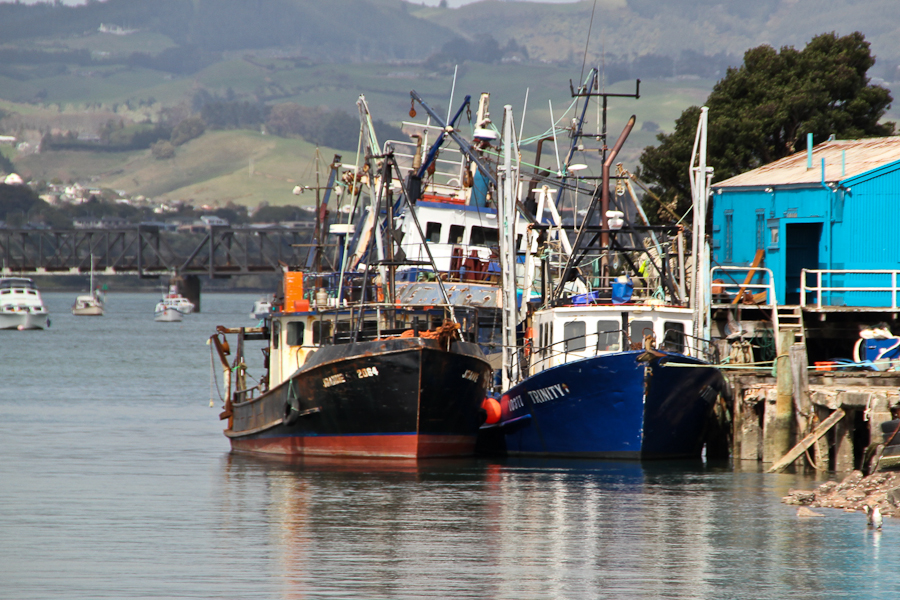As I have noted before, the world’s fisheries are in decline. The problem, it is widely recognized, is the failure of traditional government command-and-control approaches to fisheries management. Faced with the collapse of their fisheries, many nations are instead switching to systems of property rights for fisheries, the most important of which are individual transferable quotas (ITQs). But as recent research by Corbett Grainger and Christopher Costello (2014) illustrates, not all property rights systems are created equal. Thus, not all are equally effective at protecting fish stocks.
New Zealand was among the first nations to adopt ITQs in 1986 and now uses them to manage commercial harvesting of 98 species. The United States began using ITQs not long after New Zealand, but has done so with far fewer fisheries. More importantly, the property rights implicit in the ITQ systems of the two nations are fundamentally different.
In New Zealand, ITQs are viewed as perpetual rights to a share of the harvest; an ITQ is a legal asset that can be used as collateral in establishing credit with banks. In this regard, ITQ ownership in New Zealand is much like home or automobile ownership.
Matters are much different in the United States. Indeed, the governing federal law holds that quota shares “shall be considered a permit” that “may be revoked, limited, or modified at any time.” This legal structure makes ITQ property rights insecure in the United States and creates uncertainty about the future of the program. One consequence: Owners of quota shares are generally unable to use their quota as collateral at banks.
When ITQs are true property rights, harvesters have the incentive to communicate their knowledge to biologists and cooperate with them to ensure a healthy fishery.
Grainger and Costello devise an ingenious way to measure the relative security of property rights in ITQs. Many ITQ owners routinely lease their quota to other harvesters on a yearly basis, and sometimes sell them as well. Thus, both one-year lease prices and permanent sale prices can be observed. Someone who is leasing quota bears none of the risk of future changes in the ITQ program—unlike quota owners who must face that uncertainty. In New Zealand, where rights are secure, harvesters are willing to buy quota for an amount that is 12 times higher than the annual lease rate on that quota. In the United States, by contrast, harvesters will pay no more than half that much for quota. And because Grainger and Costello adjust for interest rates, type of species, and health of the fisheries in the two nations, these figures directly reflect the difference in the security of rights.
The impact of insecure property rights far transcends the inability of quota holders to get loans based on their property. Indeed, the insecurity threatens the health and future of the fisheries involved. Under catch share systems such as ITQs, government biologists set the total allowable catch (TAC) for each fishery—that is, the number or poundage of fish that may be harvested each year. Each ITQ owner is entitled to harvest a percentage share of the TAC. In a true property rights system such as New Zealand, harvesters play a pivotal role in helping the biologists set the appropriate TAC. In the conduct of day-to-day fishing, harvesters acquire the latest information on the state of the fishery. When ITQs are true property rights, harvesters have the incentive to communicate their knowledge to the biologists, and to cooperate with them to ensure a TAC that yields a healthy long-term fishery. In New Zealand, for example, it is not uncommon for harvesters to insist on a lower TAC than that originally called for by government biologists.
Incentives are different when property rights are insecure, as they are in the United States. Although the “quasi-rights” to ITQs here are far better than the command-and-control systems they replace, they are not as effective as the New Zealand system. Compared to New Zealand, owners of ITQs in the United States have less to lose if the future health of the fishery declines. Thus, harvesters have less incentive to push the biologists to set a TAC that is best for the long run. Instead, they have an incentive to push for a higher TAC, one that generates more profits now, but possibly at the expense of the future health of the fishery.
Make no mistake: Even the insecure rights of the current ITQ system in the United States are far superior to command and control. But enhancing the security of rights by modeling the property rights more closely after the New Zealand system would increase the health of fishing stocks, reverse fishery collapse, and enhance the economic viability of commercial fishing. For those who think that healthy fisheries are a key element of a healthy environment, the correct policy direction here seems obvious.
REFERENCES
Grainger, Corbett A. and Christopher J. Costello. 2014. Capitalizing Property Rights Insecurity in Natural Resource Assets. Journal of Environmental Economics and Management 67: 224-240.




